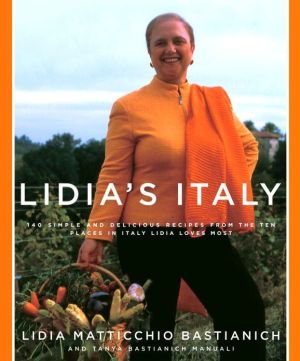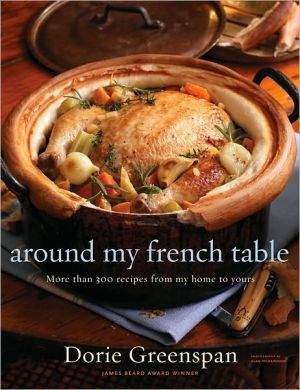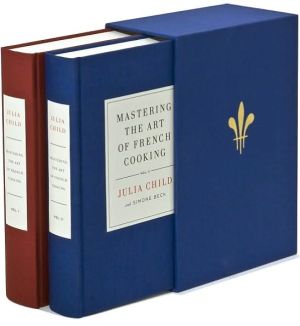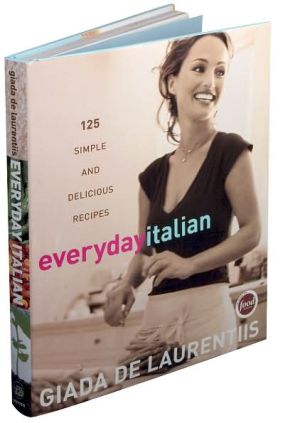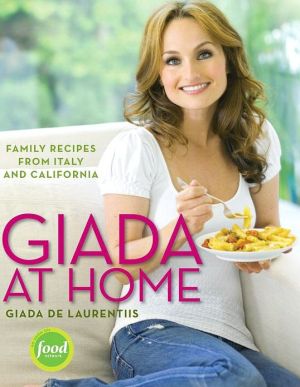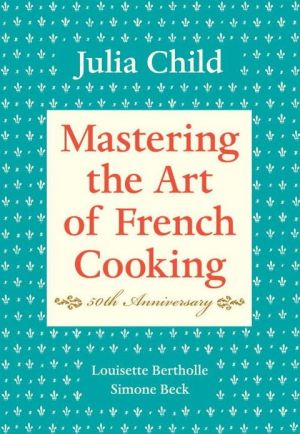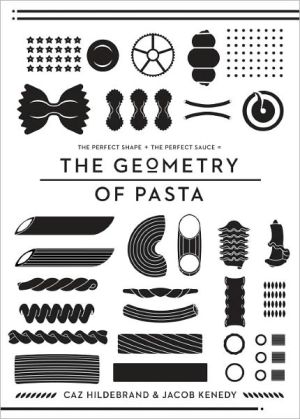Lidia's Italy: 140 Simple and Delicious Recipes from the Ten Places in Italy Lidia Loves Most
In this exciting new book the incomparable Lidia takes us on a gastronomic journey—from Piemonte to Puglia—exploring ten different regions that have informed her cooking and helped to make her the fabulous cook that she is today. In addition, her daughter Tanya, an art historian, guides us to some of the nearby cultural treasures that enrich the pursuit of good food.\ · In Istria, now part of Croatia, where Lidia grew up, she forages again for wild asparagus, using it in a delicious soup...
Search in google:
In this exciting new book the incomparable Lidia takes us on a gastronomic journey—from Piemonte to Puglia—exploring ten different regions that have informed her cooking and helped to make her the fabulous cook that she is today. In addition, her daughter Tanya, an art historian, guides us to some of the nearby cultural treasures that enrich the pursuit of good food.· In Istria, now part of Croatia, where Lidia grew up, she forages again for wild asparagus, using it in a delicious soup and a frittata; Sauerkraut with Pork and Roast Goose with Mlinzi reflect the region’s Middle European influences; and buzara, an old mariner’s stew, draws on fish from the nearby sea.· From Trieste, Lidia gives seafood from the Adriatic, Viennese-style breaded veal cutlets and Beef Goulash, and Sacher Torte and Apple Strudel.· From Friuli, where cows graze on the rich tableland, comes Montasio cheese to make fricos; the corn fields yield polenta for Velvety Cornmeal-Spinach Soup.· In Padova and Treviso rice reigns supreme, and Lidia discovers hearty soups and risottos that highlight local flavors.· In Piemonte, the robust Barolo wine distinguishes a fork-tender stufato of beef; local white truffles with scrambled eggs is “heaven on a plate”; and a bagna cauda serves as a dip for local vegetables, including prized cardoons.· In Maremma, where hunting and foraging are a way of life, earthy foods are mainstays, such as slow-cooked rabbit sauce for pasta or gnocchi and boar tenderloin with prune-apple Sauce, with Galloping Figs for dessert.· In Rome Lidia revels in the fresh artichokes and fennel she finds in the Campo dei Fiori and brings back nine different ways of preparing them.· In Naples she gathers unusual seafood recipes and a special way of making limoncello-soaked cakes.· From Sicily’s Palermo she brings back panelle, the delicious fried chickpea snack; a caponata of stewed summer vegetables; and the elegant Cannoli Napoleon.· In Puglia, at Italy’s heel, where durum wheat grows at its best, she makes some of the region’s glorious pasta dishes and re-creates a splendid focaccia from Altamura.There are 140 delectable recipes to be found as you make this journey with Lidia. And along the way, with Tanya to guide you, you’ll stop to admire Raphael’s fresco Triumph of Galatea, a short walk from the market in Rome; the two enchanting women in the Palazzo Abbatellis in Palermo; and the Roman ruins in Friuli, among many other delights. There’s something for everyone in this rich and satisfying book that will open up new horizons even to the most seasoned lover of Italy. Publishers Weekly Surely one of the secrets to Lidia Bastianich's success as a television personality is the high quality of her companion books. Bastianich's never seem like mere collections of stills from the show; they impart new information and are full of dishes even dedicated Italophiles may not know, such as Gnocchi Ravioli with Sausage-Spinach Filling and Sage Pudding. However, the concept for her latest show, and as a result this eponymous book, feels slightly haphazard. While Bastianich is to be applauded for overlooking the obvious Tuscan targets like Florence to concentrate instead on the region's less well-known natural beauty in the Maremma area with its mammoth national park, her "places" are inconsistent. They include single cities (Padova and Treviso) and whole regions (Piedmont). And while Bastianich's native Istria offers alluring specialties such as Fresh Pasta Quills with Chicken Sauce, it makes an odd subject for an opening chapter, since it is no longer part of Italy. Bastianich's daughter and coauthor, who runs an Italian tourism company, suggests a handful of sites to visit in each location, be it Spaccanapoli in Naples or a Cistercian abbey 35 miles outside of Turin. Bastianich is probably incapable of creating a truly bad book the recipes are as functional as they are tempting but this all-over-the-boot offering is not her best. (Apr.)Copyright 2007 Reed Business Information
Frittata with Asparagus and Scallions\ \ Ingredients:\ \ 1 pound fresh, thin asparagus spears\ \ 4 ounces prosciutto or bacon, thick slices with ample fat (about 4 slices)\ \ 1/2 pound scallions\ \ 3 tablespoons extra-virgin olive oil\ \ 1/2 teaspoon coarse sea salt or kosher salt, or more to taste\ \ 8 large eggs\ \ Freshly ground black pepper to taste\ \ Recommended Equipment:\ \ A sturdy 12-inch nonstick skillet with a cover\ \ A heat-proof rubber spatula\ \ Serves 4 as a light meal or 6 as an appetizer\ \ This is a different sort of frittata, not the neat golden round of well-set eggs that's probably most familiar. Here the eggs are in the skillet for barely a minute, just long enough to gather in soft, loose folds, filled with morsels of asparagus and shreds of prosciutto. In fact, when I make this frittata or the "dragged" eggs—uova strapazzate, page 143—I leave my eggs still wet and glistening so I can mop up the plate with a crust of country bread. That's the best part of all.\ \ Snap off the tough bottom stubs of the asparagus, peel the bottom few inches of each spear, and cut them crosswise in 1 1/2-inch pieces. Slice prosciutto or bacon into strips, or lardoons, about 1 inch long and 1/3 inch wide. Trim the scallions, and cut crosswise into 1-inch pieces.\ \ Pour the olive oil into the skillet, scatter in the lardoons, and set over medium heat. When the strips are sizzling and rendering fat, toss in the cut asparagus, and roll and toss them over a few times. Cover the skillet, and cook, still over moderate heat, shaking the pan occasionally, until the asparagus is slightly softened, 5 minutes or so.\ \ Scatter the scallion pieces in the pan, season with a couple pinches of salt, and toss the vegetables and lardoons together. Cover the skillet, and cook, shaking the pan and stirring occasionally, until the scallions and asparagus are soft and moist, 7 or 8 minutes more. Meanwhile, beat the eggs thoroughly with the remaining salt and generous grinds of black pepper.\ \ When the vegetables are steaming in their moisture, uncover the skillet, raise the heat, and cook, tossing, for a minute or so, until the water has evaporated and the asparagus and scallions seem about to color.\ \ Quickly spread them out in the pan, and pour the eggs over at once. Immediately begin folding the eggs over with the spatula, clearing the sides and skillet bottom continuously, so the eggs flow and coagulate around the vegetables and lardoons.\ \ When all the eggs are cooked in big soft curds—in barely a minute—take the skillet off the heat. Tumble the frittata over a few more times to keep it loose and moist. Spoon portions onto warm plates, and serve hot and steaming.\ \ Dry Fettuccine with Squash and Cauliflower\ Bavette con Zucca e Cavolo\ Serves 6\ Ingredients\ 1/2 cup extra-virgin olive oil\ 3 plump garlic cloves, crushed and peeled\ 1 small onion, thinly sliced (1 cup)\ 3 cups butternut squash cut in ½-inch cubes\ 3 cups cauliflower cut in small (about 1-inch) florets\ 4 tablespoons small capers, drained\ 1 teaspoon coarse sea salt or kosher salt, or to taste, plus more for cooking pasta\ 1/2 teaspoon peperoncino flakes, or to taste\ 2 cups canned Italian plum tomatoes, preferably San Marzano, crushed by hand\ 1 pound dry fettucine or bavette\ 1 cup freshly grated pecorino\ Recommended Equipment\ A heavy-bottomed skillet or sauté pan, 14-inch diameter, with a cover A large pot, 8-quart capacity or larger, with a cover, for cooking the pasta\ \ Dry Fettuccine with Squash and Cauliflower\ Bavette con Zucca e Cavolo\ \ 1. Pour the olive oil into the big skillet, and set over medium-high heat.\ 2. Scatter in the sliced garlic, and let it start sizzling.\ 3. Stir in the onion slices, and cook for a couple of minutes, to wilt.\ 4. Spill in all the cut squash and cauliflower pieces, scatter the capers, salt, and peperoncino on top, and with tongs toss all together for a minute or so.\ 5. Pour a cup of water into the skillet, cover tightly, and steam the vegetables for 2 to 3 minutes, shaking the pan occasionally.\ 6. Pour in the crushed tomatoes along with a cup of water sloshed in the tomato cans. Stir well and cover; when the tomato juices are boiling, adjust the heat to keep them bubbling gently. Cook covered for about 10 minutes, stirring occasionally.\ 7. When the vegetables are softened, uncover and continue cooking to reduce the pan juices to a good consistency for dressing the pasta, about 5 minutes. Adjust the seasoning to taste, and keep at a low simmer.\ 8. While the sauce is cooking, heat salted pasta-cooking water to a rolling boil (at least 6 quarts water and a tablespoon salt).\ 9. Drop in the fettuccine or bavette, and cook until barely al dente.\ 10. Lift them from the water, drain for a moment, then drop into the simmering vegetables. Toss and cook all together for a couple of minutes over moderate heat. Moisten the dish with pasta water if it seems dry; cook rapidly to reduce the juices if they're splashing in the skillet.\ 11. When the pasta is perfectly cooked and robed with sauce, turn off the heat. Sprinkle over it the grated cheese, toss into the pasta, and serve.\ \
\ Publishers WeeklySurely one of the secrets to Lidia Bastianich's success as a television personality is the high quality of her companion books. Bastianich's never seem like mere collections of stills from the show; they impart new information and are full of dishes even dedicated Italophiles may not know, such as Gnocchi Ravioli with Sausage-Spinach Filling and Sage Pudding. However, the concept for her latest show, and as a result this eponymous book, feels slightly haphazard. While Bastianich is to be applauded for overlooking the obvious Tuscan targets like Florence to concentrate instead on the region's less well-known natural beauty in the Maremma area with its mammoth national park, her "places" are inconsistent. They include single cities (Padova and Treviso) and whole regions (Piedmont). And while Bastianich's native Istria offers alluring specialties such as Fresh Pasta Quills with Chicken Sauce, it makes an odd subject for an opening chapter, since it is no longer part of Italy. Bastianich's daughter and coauthor, who runs an Italian tourism company, suggests a handful of sites to visit in each location, be it Spaccanapoli in Naples or a Cistercian abbey 35 miles outside of Turin. Bastianich is probably incapable of creating a truly bad book—the recipes are as functional as they are tempting—but this all-over-the-boot offering is not her best. (Apr.)\ Copyright 2007 Reed Business Information\ \ \ \ \ Library JournalBastianich is the owner of Felidia's in New York City and of Lidia's restaurants in Pittsburgh and Kansas City, as well as the author of four previous cookbooks. Her latest title, the companion to her new PBS series, focuses on her favorite Italian regions, from Istria (now part of Croatia), where she was born, to Puglia, the "heel" of Italy's "boot." Recipes are organized by course within each region (there is a separate episode listing, as well as a master list by course), and while there are some sophisticated restaurant creations here, Bastianich has a fondness for rustic, traditional favorites, such as Alma's Cooked Water Soup or Sicilian Chicken Cacciatora with Eggplant. Her daughter Tanya is an art historian, and each chapter includes a bonus section called "Tanya's Tour" on not-to-be-missed cultural highlights. Highly recommended.\ \ —Judith Sutton\ \
